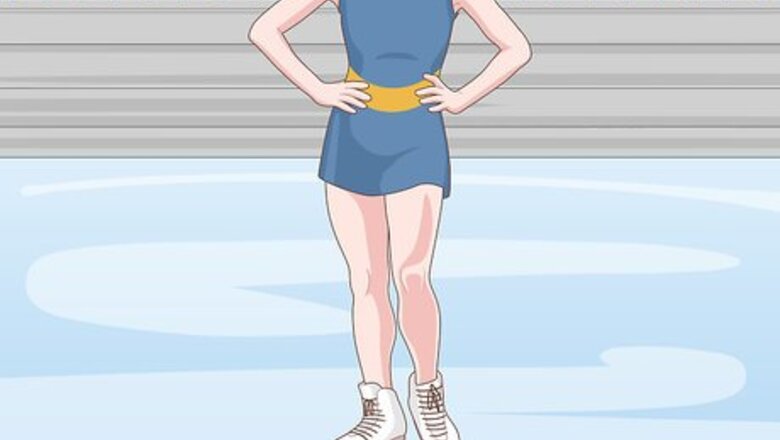
views
Developing Your Stance
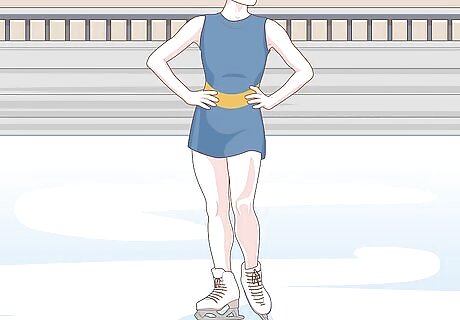
Stand still on or off the ice with your feet shoulder-width apart. Before you actually attempt an axel, take some time to get your stance right. Try standing in a pair of sneakers on a flat, even surface off of the ice, such as on a hardwood floor or concrete, or stand on the ice while wearing your skates. Don’t skate forward if you are standing on the ice. Just stand still for now.
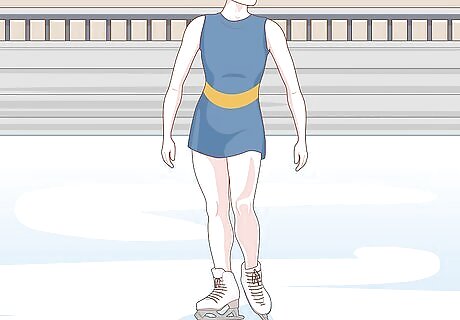
Put your arms out to your sides and let them hang down. Position yourself so that your arms are relaxed and down at your sides. Relax your shoulders and let your arms hang loosely for a minute. This is the position your arms will be in as you skate forward to gain speed for the jump, but don’t skate forward yet.
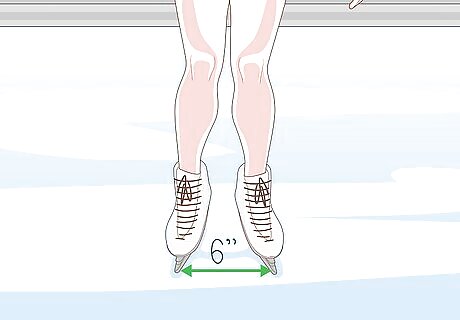
Bring your ankles about 6 in (15 cm) apart and tense them. Next, bring your ankles in closer together under your body as if you are trying to squeeze a ball between them. This will help you to increase your speed as you skate. Tense the muscles in your ankles as you bring them together to help prepare yourself for the jump. Make sure that your ankles are tight and ready for the jump when you bring them together!
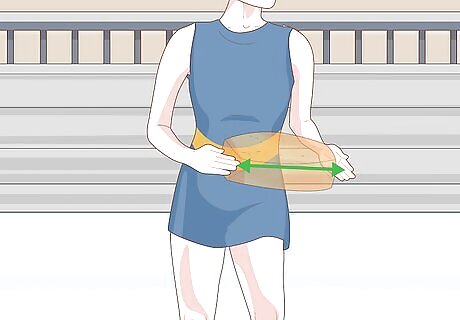
Position your hands in front of you as if you are holding a loaf of bread. While still tensing your ankles, bend your elbows and bring your hands in front of your body. Keep your hands spaced so that it looks like you are holding a loaf of bread in between them. This is the position your hands will be in when you lift off into the jump and also while you are executing the jump.Tip: Proper body alignment is crucial for successfully executing an axel. Practice your stance until it feels like second nature. This will help to ensure that you maintain the correct stance during your axels.
Executing a Single Axel
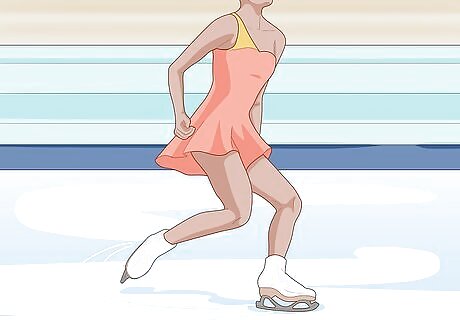
Skate forward and get into position. As you get ready to execute the axel jump, skate forward and then start to pick up speed. Then, get into the position that you practiced before. Skate forward quickly with your ankles close together and tensed, and bring your hands in front of you as if you are holding a loaf of bread. Make sure that you are approaching the jump on the left (left foot), outside edge of your skates. Then swing through with your right free-leg for the knee lift.
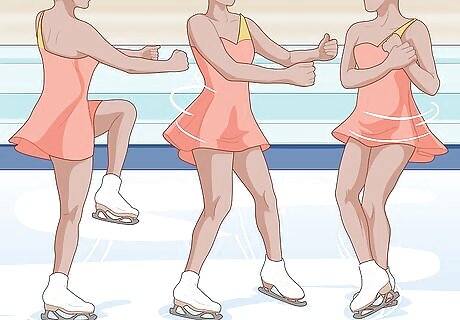
Lift your right knee up into the air and jump upwards. When you are ready to attempt the jump, pick up your right knee quickly to lift yourself off of the ground. Use your left foot to help launch yourself up off the ground as well. The motion of quickly lifting your knee along with pushing off the ice with your left foot is what allows you to jump. This movement should be quick and powerful or you won’t get enough height.
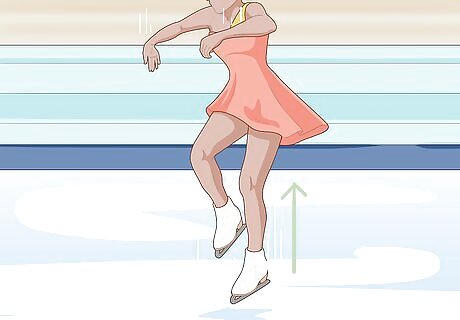
Push downwards with your hands. As you jump, bring your hands down to your sides. Snap your elbows to a straightened position to do this. This should look as if you are breaking the imaginary loaf of bread across your knee. Snapping your arms down into a straightened position will help you to get the power needed to jump higher.
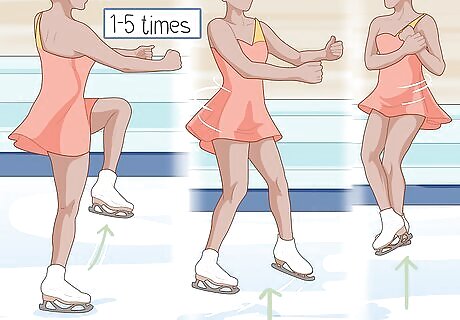
Turn 1.5 times in midair for a single axel. As you launch yourself up off of the ice, use your arms and right knee to propel yourself into a counterclockwise spin. The action of launching into the jump from skating will also help you to spin in midair. Twist your body counterclockwise as you leave the ice to help you get this motion. Aim to turn at least 1.5 times in midair so that you land facing 180 degrees away from the direction you started the jump in. Focus on landing a single axel with a 1.5 spin while you are just learning. Double (2.5 spins) and triple (3.5 spins) axels are much more advanced and harder to land.
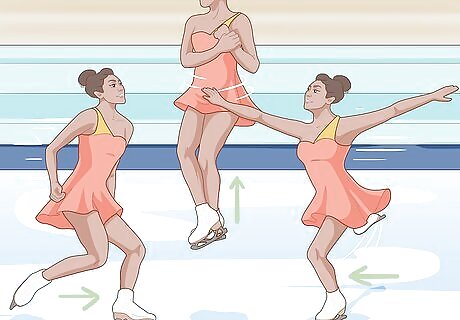
Land facing the opposite direction and glide back on your left foot. When you finish your spin, come down onto your left skate and then glide backwards to complete the jump. Put your arms out to your sides as you land to help stabilize yourself and make it easier to stick the landing. Once you feel steady, continue skating backwards and then move into the next part of your routine.Tip: Don’t worry if your landing isn’t perfect the first time or even if you fall. The axel is a difficult jump to land. Just keep practicing and you will get it eventually!
Developing Stability and Strength for the Axel
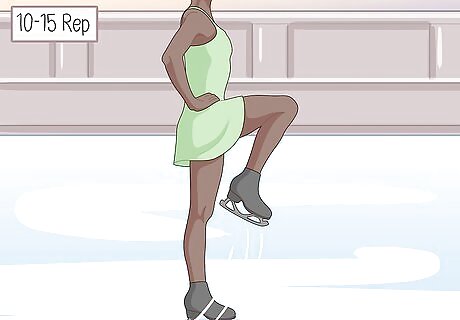
Do several knee lifts before you do an axel. Before you do an axel, lift your right knee up in front of you as high as you can. Repeat this 10 to 15 times to practice the motion. It is important to lift your knee high into the air when you move into an axel. This ensures that you will get the required amount of height and inertia for the jump.
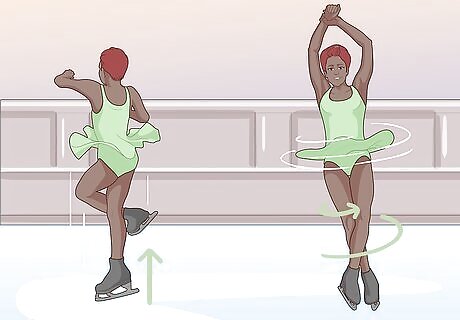
Try the jump and spin off of the ice. If you want to get the movement of the jump, spin, and landing down without the risk of falling on the ice, you could try doing axel jumps from standing or running off of the ice. Follow the same body movements and process to do the jump, but do the whole thing while wearing sneakers on a hard surface, such as a hardwood floor or concrete. For an even safer option in case you fall, try doing axel jumps on grass or carpet flooring.
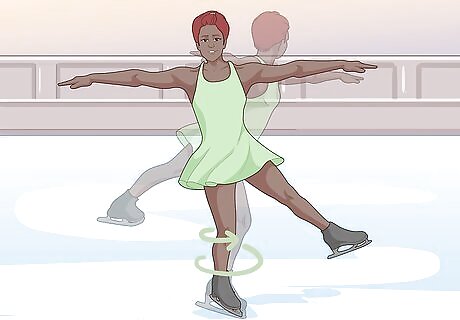
Practice the back scratch spin. Plant 1 toe on a spot on the ice and begin to spin backwards around that central point. Spin as quickly as you can, but stay within your comfort zone. To accelerate more, bring your arms in close to your body as if you are hugging yourself. Back scratch spins will help you to build stability for the spinning part of your axel, so do these as part of your regular workouts.
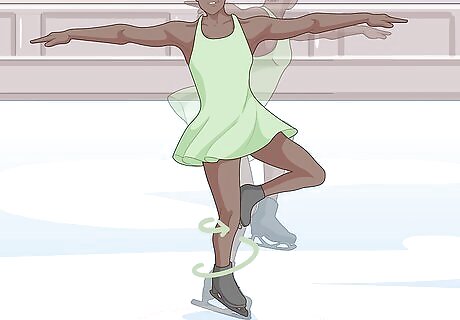
Add a loop at the end of your back scratch spin. A loop is a small jump or hop that you can do to end a spin. When you are ready to end the spin, step or gently hop out of it with your outer foot and then glide backwards. This will help you to build stability for coming out of your midair jump and into your landing.
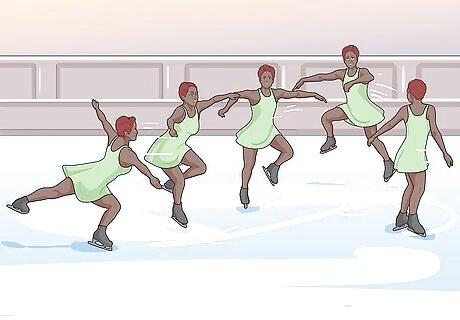
Do waltz jumps. To do a waltz jump, skate forward. As you skate, kick your right leg forward and bring your right knee up. Jump into the air as you bring up your knee, and then land on your left foot. Waltz jumps are much less complex than axels, but they incorporate similar body mechanics, so they will help you to achieve an axel jump. A waltz jump is similar to an axel jump, except you do not spin with a waltz jump. Make sure that you do waltz jumps as part of your regular practice sessions to ensure that you will have the strength and stability for axels.Tip: Pair a waltz jump with a back scratch spin for a slightly more complex exercise.


















Comments
0 comment